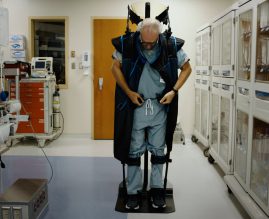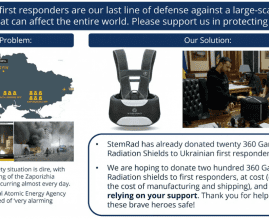[Radiation] Accidents Do Happen
09.26.19 | Thursday | Nofit Amir
The number of radioactive sources used in industry is extremely high, and while regulatory bodies issue stringent safety guidelines regarding dangerous industrial radiation sources, these are not always followed. Users commonly stray from the guidelines –through negligence or human error – and endanger themselves as well as the public. The Nuclear Regulatory Commission (NRC) issues reports of mishandling and accidents involving radioactive sources on a regular basis.
For instance, workers – such as the one reported below who was responsible for a Category 2 radioactive source, cataloged as “very dangerous” by the Nuclear Regulatory Commission (NRC) and the International Atomic Energy Agency (IAEA) – may not fasten and lock radiation sources to their vehicles as required during transport:
Transportation accidents also figure quite prominently in NRC reports. One example:
In the two last months of reports that we went through, fires involving radioactive sources occurred several times, but thankfully with sources that were less than Category 3 (undangerous level) or, in one case, of an unspecified category as the incident is still being investigated.
America is not alone: Accidents have occurred around the world, causing the death or permanent injury of industrial workers and other members the public.
As an IAEA report explains (emphasis added): “Radiation sources used for industrial radiography purposes have high radiation outputs and are potentially very hazardous. Incidents have occurred mainly as a result of operator error or equipment failure, and have resulted in workers and members of the public receiving high radiation doses [14–18]. …A review of emergencies in radiography shows that there are several types of incident that have historically occurred commonly with industrial radiography sources. Operating organizations should consider the types of incident listed in paras 13.12 and 13.13 below in their emergency plans, as appropriate.
For gamma radiography equipment, the operating organization should consider incidents in which: (a) A source becomes stuck in the guide tube or the collimator, or near the entrance to the exposure device. (b) Physical damage is caused that affects the shielding. (c) A source becomes disconnected from its drive cable and remains in the guide tube. (d) A source is projected out of the end of the guide tube. 65 (e) A pipeline crawler becomes stuck in a pipe with the source exposed. (f) A source is lost. (g) There is a fire. (h) Unauthorized persons are present in the controlled area during an exposure.
In light of the prevalence of gamma radiation sources – on the road as well as in medical facilities, research centers, and a multitude of industrial locations – first responders should have wearable gamma radiation protection on-hand. This has been made possible with StemRad’s selective shielding technology. The technology is being used by special military units, nuclear plant workers and perhaps, quite soon, even by NASA astronauts. It is time to make it widely accessible to first responders.

Writes content for StemRad’s website, social media, and newsletter. She is an advocate with over twenty years of experience of writing high-end content in academic and industrial settings.


